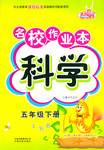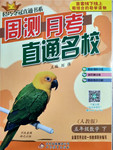5.To take the apple as a forbidden fruit is the most unlikely story the Christians(基督教徒)ever cooked up.For them,the forbidden fruit from Eden is evil(邪恶的).So when Columbus brought the tomato back from South America,a land mistakenly considered to be Eden,everyone jumped to be the obvious conclusion.Wrongly taken as the apple of Eden,the tomato was shut out of the door of Europeans.
What made it particularly terrifying was its similarity to the mandrake(曼德拉草),a plant that was thought to have come from Hell (地狱).What earned the plant its awful reputation was its roots which looked like a dried-up human body occupied by evil spirits.Though the tomato and the mandrake were quite different except that both had bright red or yellow fruit,the general population considered them one and the same,too terrible to touch.
Cautious Europeans long ignored the tomato,and until the early 1700s most of the Western people continued to drag their feet.In the 1880s,the daughter of a well-known plant expert wrote that the most interesting part of an afternoon tea at her father's house had been the"introduction this wonderful new fruit-or is it a vegetable?"As late as the twentieth century some writers classed tomatoes with mandrakes as an"evil fruit".
But in the end tomatoes carried the day.The hero of the tomato was an American named Robert Johnson,and when he was publicly going to eat the tomato in 1820,people journeyed for hundreds of miles to watch him drop dead."What are you afraid of?"he shouted."I'll show you fools that these things are good to eat!"Then he bit into the tomato.Some people fainted.But he survived and,according to a local story,set up a tomato-canning factory.
12.The tomato was shut out of the door of early Europeans mainly becauseD.
A.it made Christians evil B.it was the apple of Eden
C.it came from a forbidden land D.it was religiously unacceptable
13.What can we infer from the underlined part in Paragraph 3?C
A.The process of ignoring the tomato slowed down
B.There was little progress in the study of the tomato
C.The tomato was still refused in most western countries
D.Most western people continued to get rid of the tomato
14.What is the main reason for Robert Johnson to eat the tomato publicly?B
A.To make himself a hero
B.To remove people's fear of the tomato
C.To speed up the popularity of the tomato
D.To persuade people to buy products from his factory
15.What is the main purpose of the passage?C
A.To challenge people's fixed concepts of the tomato
B.To give an explanation to people's dislike of the tomato
C.To present the change of people's attitudes to the tomato
D.To show the process of freeing the tomato from religious influence.
分析 本文主要讲述了番茄在欧洲从刚开始的不被接受,到后来开放了番茄罐头厂的"发展经历".番茄最开始被当做禁果,后来由于Robert Johnson尝试吃番茄,人们才改变了对它的看法.
解答 12.D.细节理解题.根据文章"So when Columbus brought the tomato back from South America,a land mistakenly considered to be Eden,everyone jumped to the obvious conclusion.Wrongly taken as the apple of Eden"可知,欧洲人错误的把西红柿当做禁果,这是宗教不允许的.故选D.
13.C.推理预测题.根据文章"Cautious Europeans long ignored the tomato"可知,欧洲仍然忽视番茄."and"一词表示前后文表达的意思应为一致.A项错误.从前文来看.番茄的不被重视是整个西方国家的排斥,而不只是一些西方人.故选C.
14.B.细节理解题.根据文章"What are you afraid of?"he shouted."I'll show you fools that these things are good to eat!""可知,Robert Johnson吃番茄是为了让人们不在害怕.故选B.
15.C.主旨大意题.本文主要讲述了番茄在欧洲的"发展",从刚开始的不被接受,到后来开放了番茄罐头厂,可见人们对它的态度产生了巨大的改变.故选C.
点评 本文是一个新闻报道类理解,题目涉及多道细节理解题,做题时结合原文和题目有针对性的找出相关语句进行仔细分析,结合选项选出正确答案.推理判断题也是要在抓住关键句子的基础上合理的分析才能得出正确答案,切忌胡乱猜测,一定要做到有理有据.



 一卷搞定系列答案
一卷搞定系列答案 名校作业本系列答案
名校作业本系列答案 轻巧夺冠周测月考直通名校系列答案
轻巧夺冠周测月考直通名校系列答案